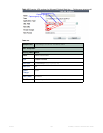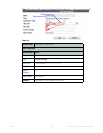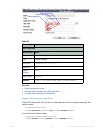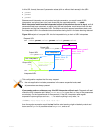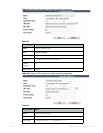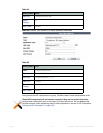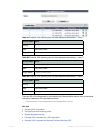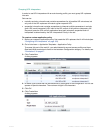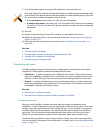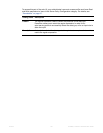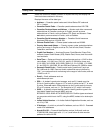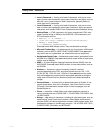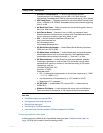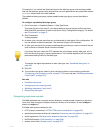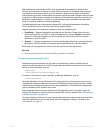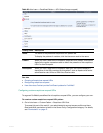
Fortinet 166 FortiWeb 5.0 Patch 6 Administration Guide
7. From Plugin Name, select an existing URL replacer from the drop-down list.
8. Click OK.
9. Repeat the previous steps for each URL replacer you want added to the policy.
10.Select the application policy in an auto-learning profile (see “Configuring an auto-learning
profile” on page 177).
11.Select the auto-learning profiles in server policies (see “Configuring a server policy” on
page 483).
See also
• Configuring URL interpreters
• Example: URL interpreter for Microsoft Outlook Web App 2007
• Example: URL interpreter for WordPress
• Configuring an auto-learning profile
Recognizing data types
FortiWeb appliances recognize the data types of parameters by matching them with regular
expressions. These regular expressions are categorized as either:
• Predefined — A r
egular expression set included with the firmware. These match common
data types. Cannot be modified except via FortiGuard, but can be copied and used as the
basis for a custom data type. Can be used by both auto-learning profiles and input rules.
• Custom — A regular expression that you have configured to detect any data patterns that
cannot be recognized by the predefined set. Can be modified. Can be used by input rules,
but cannot be used by auto-learning profiles.
See also
• Connecting to FortiGuard services
• How often does Fortinet provide FortiGuard updates for FortiWeb?
Predefined data types
When you install FortiWeb, it already has some data type regular expressions that are
predefined — default signatures for common data types so that you do not need to write them
yourself. Initial ones are included with the FortiWeb firmware. If your FortiWeb is connected to
FortiGuard Security Service updates, it can periodically download updates to its predefined
data types. This will provide new and enhanced data types without any effort on your part.
Simply use the new signatures in parts of the configuration where they are useful to you.
Predefined data type patterns cannot be used directly. Instead, they must be grouped before
th
ey ca
n be used in other areas of the configuration. For details, see “Grouping predefined data
types” on page 170.
Rule order affects URL replacer matching and behavior. FortiWeb appliances evaluate URLs
for a matching URL replacer starting with the smallest ID number (greatest priority) rule in the
list, and continue towards the largest number in the list.
• If no rule matches, parameters in the URL will not be interpreted.
• If multiple rules match, the output (New URL) from earlier URL replacers will be used as
the input (URL Path) for the next URL replacer, resulting in a chain of multiple interpreted
parameters.



